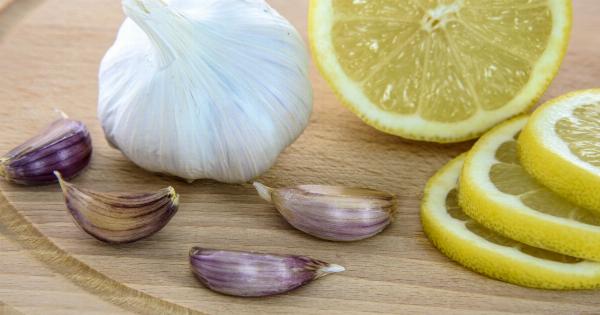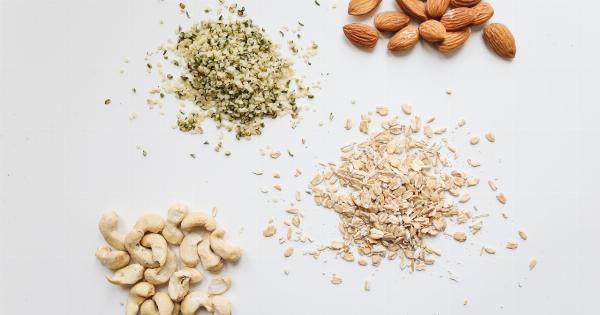Coffee is one of the most popular beverages worldwide, enjoyed by millions of people every day. Apart from its rich and enticing flavor, coffee is also known for its antioxidant properties.
Antioxidants help protect the body from harmful free radicals and reduce the risk of chronic diseases. However, the antioxidant content of coffee can vary depending on various factors, including the temperature at which it is consumed. In this article, we will delve into the debate of warm vs. cold coffee and which one packs a bigger antioxidant punch.
Antioxidants in Coffee
Coffee is a rich source of antioxidants, which are chemical compounds that help prevent or delay cell damage caused by free radicals. Some of the key antioxidants found in coffee include chlorogenic acid, caffeic acid, and melanoidins.
These compounds have been shown to have various health benefits, such as reducing inflammation, preventing oxidative stress, and improving overall well-being.
Warm Coffee: The Traditional Choice
For centuries, warm coffee has been the preferred choice of many coffee enthusiasts. The warmth and aroma of a freshly brewed cup of coffee can be quite comforting, especially on a chilly morning.
When coffee is brewed at hot temperatures, it releases more antioxidants compared to when it is consumed cold. This is because heat helps extract the beneficial compounds from the coffee beans, ensuring a higher concentration of antioxidants in the final beverage.
Understanding the Coffee Brewing Process
To truly appreciate the antioxidant content of warm coffee, it is essential to understand the coffee brewing process.
When coffee grounds are exposed to hot water during brewing, the high temperature helps extract the antioxidants and other active compounds from the beans. The water acts as a solvent, dissolving the beneficial compounds and allowing them to infuse into the beverage. As a result, warm coffee generally contains a higher concentration of antioxidants compared to cold coffee.
Cold Coffee: A Refreshing Twist
In recent years, cold coffee has gained immense popularity, especially during the scorching summer months.
Cold coffee is typically brewed using a cold brewing method, where coffee grounds are soaked in cold or room temperature water for an extended period, usually 12 to 24 hours. This slow extraction process results in a milder and less acidic beverage.
The Impact of Cold Brewing on Antioxidants
Cold brewing coffee has its own set of advantages, including a smoother and less bitter taste. However, when it comes to antioxidants, cold brewing has its limitations.
The extended steeping time and lower temperature in cold brewing may not extract the same amount of antioxidants compared to traditional hot brewing. While cold coffee still contains antioxidants, they may be present in a slightly lower concentration compared to warm coffee.
Factors Affecting Antioxidant Content
It is important to note that several factors can influence the antioxidant content of coffee, regardless of whether it is consumed warm or cold.
Some of these factors include the type of coffee bean, the roasting process, the brewing method, and even the water used for brewing. Each of these factors can impact the final antioxidant profile of the coffee beverage.
Choosing the Right Coffee
Whether you prefer warm or cold coffee, the key lies in choosing the right coffee beans. Opt for high-quality, freshly roasted coffee beans. Darker roasts tend to retain more antioxidants due to the longer roasting process.
Additionally, organic or shade-grown coffee beans have been found to have higher antioxidant levels compared to conventionally grown beans. Experiment with different varieties and find the one that suits your taste preferences while also providing a higher antioxidant punch.
Overall Antioxidant Comparison
While warm coffee generally contains a higher concentration of antioxidants compared to cold coffee, it is important to remember that both options can contribute to your antioxidant intake.
The difference in antioxidant levels between warm and cold coffee is relatively small and may not significantly impact overall health benefits.
Final Thoughts
When it comes to warm vs. cold coffee, both options have their own unique charm. Warm coffee offers a rich and comforting experience, while cold coffee provides a refreshing twist, especially during hot weather.
From an antioxidant perspective, warm coffee tends to pack a slightly bigger punch due to the extraction process during brewing. However, the overall difference in antioxidant content between warm and cold coffee is minimal, and both can contribute to your daily intake of antioxidants.
Ultimately, the choice between warm and cold coffee boils down to personal preference and the experience you seek from your daily cup of Joe!.































